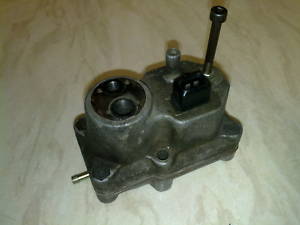Well at the moment,I have one in bits from the 924 with points ignition,that I have been trying to get started for several months.Having rebuilt the fuel distributor,checked all injectors,extra air valve,cold start injector,I am now working on the rest of the fuel system starting with the WUR back to the tank.
From the photo above ,the adjusting screw appears to have replaced the internally fitted brass stud onto which the steel spring actuator arm,which has the electric heating coil on it, fastens against a fixed location with a brass nut ,washer & lock washer.
I presume that by being able to alter this fixed stop position,either way,alters the loading of the spring against the conical cup on which it bears,& therefore alters the loading of the pin located in the coned cup on the thin stainless diaphragm on which the other end of the pin is located.
When cold ,the diaphragm closes as far as I can trace & no fuel can flow back to the fuel tank,thus maintaining higher pressure in the system-as the housing warms up with engine heat from the manifold & from the heating coil,the return valve opens progressively altering the pressure as fuel starts to return to the tank,so I presume the adjuster must change the point ie temperature when this happens.
That's my understanding so far (& am happy to be corrected as I haven't tried to dismantle the steel valve which seems to be clamped by it's 4 screws through the aluminium housing of the WUR).Since no fuel goes into the housing but purely circulates in the steel valve,I am not sure quite what actuates the valve,other than differential pressure as under the SS diaphragm disc is an O-ring around a shallow recess in which there is a small hole through to the outside return fuel tapping (I have blown through this with compressed air & it only emerges at the one tapping)
When I have summoned up the courage to attempt to dissemble the valve (it's not my car!),then maybe I might be better informed.)
However,I would agree with Lawrence that a pressure gauge could be necessary so that hot running pressure is correct & not affected by overdoing the adjustment.











